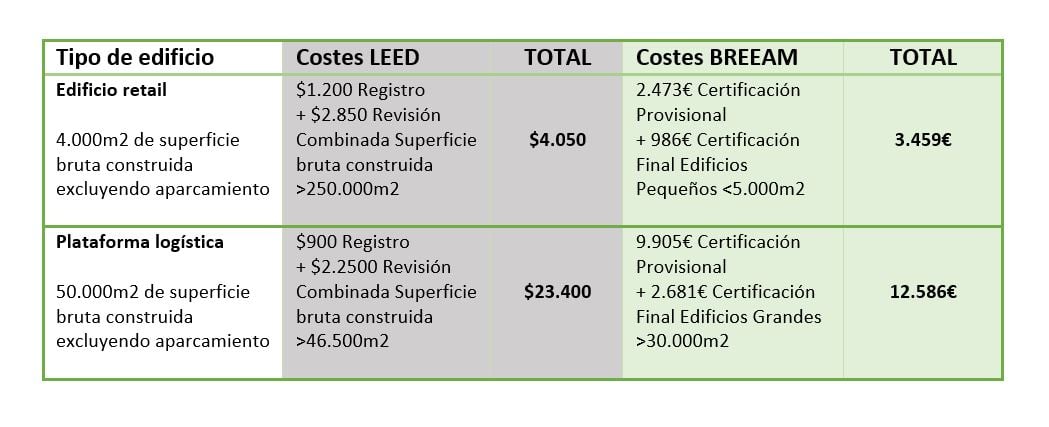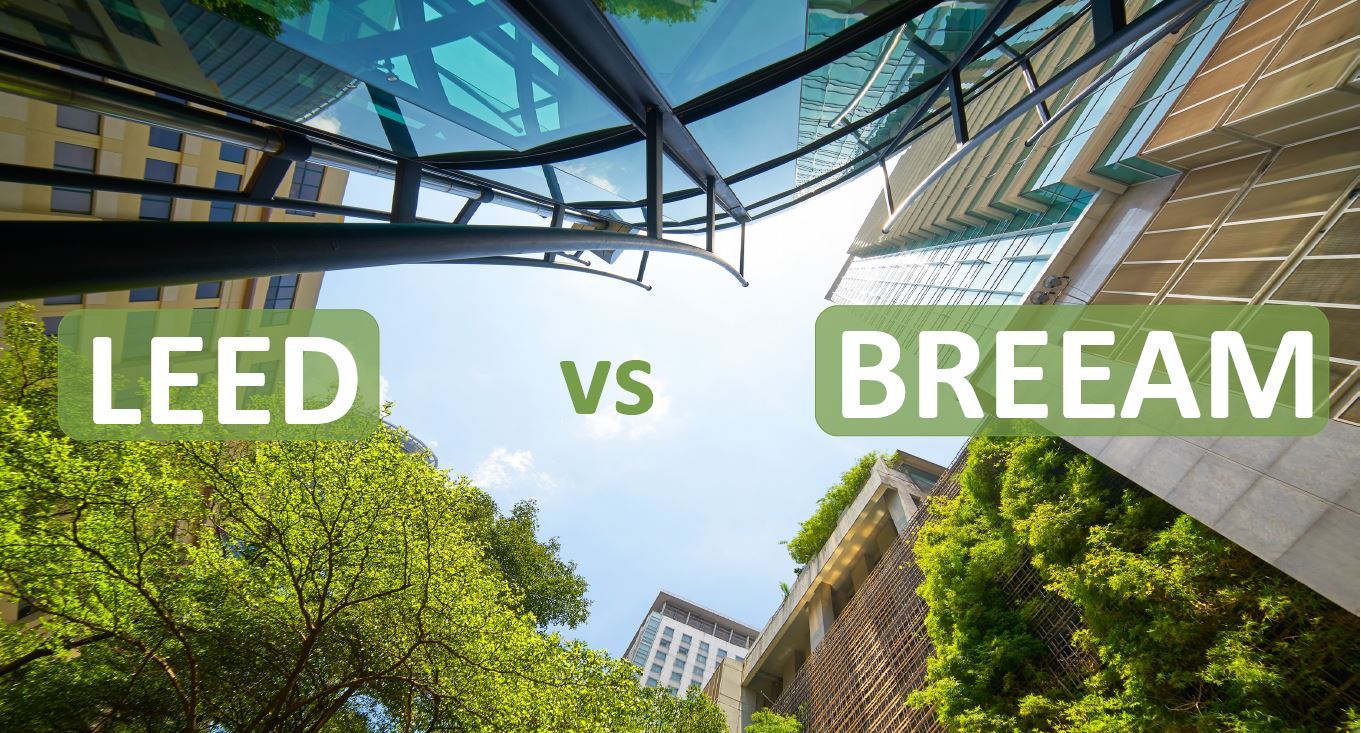Each project is different, therefore, with this review we aim to shed light on which certification to choose, according to the characteristics of each building and how its execution will be carried out.
Why LEED and BREEAM?
These are the two best known and most widespread sustainable building certificates internationally.
- LEED (Leadership in Energy and Environmental Design)
- BREEAM (Building Research Establishment's Environmental Assessment Method)
They have different origins and characteristics, but are the two most successful thanks to their recognition, adaptability and market penetration.
Your choice will depend on the particularities of the building to be certified and the interests of the developer. It is most appropriate for a consulting company with experience in both certifications to carry out a pre-assessment of the building under both systems, in order to determine which is more advantageous in each particular case.
History
The origin of both certifications is private, driven by non-profit associations. BREEAM was founded in 1990 in the UK and is the first system for assessing the sustainability of buildings. LEED came into being just three years later, in 1993 in the United States, thanks to the initiative of some 50 companies that created the USGBC.
BREEAM has a European and more local vision, as it is adapted to certain countries in our environment, in case it is not adapted, the BREEAM International scheme is used, which works for the rest of the countries in the world. Whereas LEED is global and has no adaptations in practically any country.
However, both the international version of BREEAM and LEED incorporate extra points in certain credits; these extra points are granted based on the characteristics of each country and are called regional credits.
In addition, both tools also establish collaboration agreements with local organisations. In the case of our country, the USGBC has a collaboration agreement signed with the GBCe. While BREEAM has been specifically adapted to our country and is managed by BREEAM ES, belonging to the Technological Institute of Galicia.
Expansion
We can say that LEED is the most well-known sustainable certification, as it is present in more countries and collaborates with more companies; on the other hand, BREEAM, although it has a presence in fewer countries, leads in certified buildings in Europe.
Precisely, LEED was present in more than 136 countries, with more than 48,780 certified buildings and 12,000 member companies by the end of 2015; compared to the 78 countries where BREEAM operates, 561,196 certified projects, and about 5,000 advisors.
Building typology to which they adapt
According to the typology of each building (whether residential, public, tertiary...) a method of evaluation that adapts to its characteristics is necessary, which are classified in schemes. The schemes that each tool has are as follows:
- BREEAM: Housing, New Construction, In Use, Urbanisation, Retrofits, Infrastructures
- LEED v4: New construction, Schools, Shops, Data centres, Logistic warehouses, Hospitals, Hotels, Housing, In use, Retrofits, Town planning.
With both tools, it is possible to certify buildings that will be left empty so that in the future the occupant can finish the interior finishes. This certification system is called Core and Envelope and is intended for operations that are done at risk.
Any type of building can be certified under both systems, whether new or existing, and for any type of use: universities, shops, offices, hospitals, homes, football pitches, logistic warehouses, housing blocks, etc.
Score
In LEED, a total of four levels can be achieved: Certified, Silver, Gold, and Platinum; whereas in BREEAM there are: Correct, Good, Very Good, Excellent, and Exceptional. Thus, the British have an extra level of scoring reserved for very exclusive buildings.

As we have seen above, most of the buildings in Spain are in the medium score levels, as in the rest of the countries. Precisely, 105 of the 178 LEED projects are Gold and 32 Silver, while 86 of the 253 BREEAM are Very Good. This is due to the high demands of the highest levels, which are difficult and costly to reach; therefore, it depends on the willingness of the promoters to invest in sustainability and not settle for just the minimum scores.
Prerequisites
Within the requirements of each category there are mandatory requirements, without which certification is not possible. Optional requirements serve to increase the score. In the case of LEED, the mandatory requirements are presented at the beginning of each category, requiring compliance to proceed with the process, regardless of the score to be obtained and without the possibility of substituting them.
BREEAM, on the other hand, sets a number of minimum requirements for each category according to the score level that is desired to be achieved. For example, a GST1 Sustainable Management requirement must be fulfilled in order to obtain an Excellent, but the same requirement is not necessary if you want to achieve the Very Good level. In this way, the most affordable requirement from the section for the building in question can be chosen from all possible alternatives.
Certifier team
In the case of BREEAM, a certified advisor trained by BREEAM is required, who will be the project leader. In LEED, however, buildings can be certified without having a LEED AP accredited professional. However, it is highly recommended to have the figure of a LEED AP to facilitate the entire process, and their collaboration represents an additional point in the final certification.
In our case, Zero Consulting is a BREEAM accredited body to certify buildings under the New Build, Housing and In Use schemes, with an accredited assessor on the team.
We are also Silver members of the US Green Building Council, so we get discounts on LEED certifications, in addition to having several LEED AP accredited professionals.
Certification costs
Different studies claim that the average cost of the two certifications is approximately 2% of the building construction cost. On the USGBC page, the breakdown is even made depending on the score level:
- 0.7% LEED Certified / BREEAM Approved
- 1.9% LEED Silver / BREEAM Good
- 2.2% LEED Gold / BREEAM Very Good
- 6.8% LEED Platinum / BREEAM Excellent or Outstanding
In the case of LEED, the rates for all types of buildings are subject to the square metres they will occupy, with the amounts for large buildings such as logistic warehouses increasing significantly. In contrast, BREEAM only considers surfaces for new construction buildings and urban planning projects.
Next, we have assumed two specific cases of buildings that could be certified to observe the differences. We assume that we are Silver LEED members, that we never request expedited reviews or appeals, as these mean an increase:



